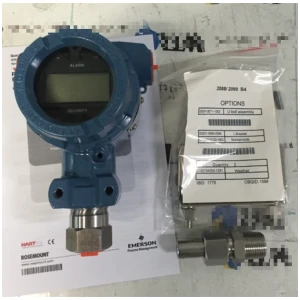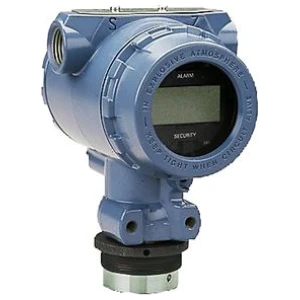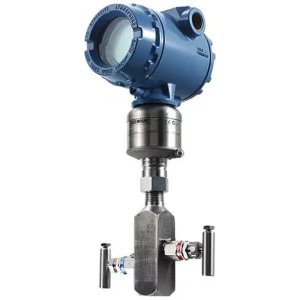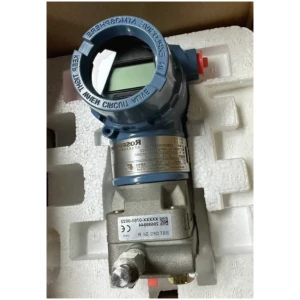Gauge pressure transmitters are sophisticated measurement devices that compare process pressure against atmospheric pressure as a reference point, converting the measured pressure differential into standardized electrical signals (4-20mA or digital outputs) for precise monitoring and control of gases, liquids, and steam across industrial processes from chemical manufacturing to water treatment.
Visit SCS-Instrument Supplier today to explore our comprehensive selection of gauge pressure transmitters from leading brands, available in various specifications to meet your exact measurement needs.
Absolute Pressure Transmitters
Absolute Pressure Transmitters
Absolute Pressure Transmitters
Absolute Pressure Transmitters
Absolute Pressure Transmitters
Gauge Pressure Transmitters
Gauge Pressure Transmitters
Absolute Pressure Transmitters
Absolute Pressure Transmitters
Gauge Pressure Transmitters
Understanding Gauge Pressure Transmitters
Gauge pressure transmitters measure process pressure in relation to the ambient atmospheric pressure. Instead of comparing pressure to an internal vacuum (as absolute transmitters do), gauge devices consider atmospheric conditions as their baseline or zero point. This principle is especially beneficial in open or vented systems where maintaining accurate readings slightly above or below atmospheric conditions is essential. A typical gauge pressure transmitter includes:- Flexible Diaphragm Exposed to process media on one side and local atmospheric pressure on the other, it deflects as process pressure changes.
- Sensing Element Using piezoresistive, capacitive, or strain-gauge technology, it translates diaphragm deflections into electrical signals.
- Electronics Module Internal circuitry processes the signals and outputs them in industry-standard formats (e.g., 4–20 mA or digital protocols), all housed within a sealed enclosure for protection against moisture and dust.
Gauge Pressure Transmitters Available from scs-Instrument
At scs-Instrument, we distribute a broad range of gauge pressure transmitters from top manufacturers. Our offerings cater to industries such as Oil & Gas, Food & Beverage, Petroleum Refining, Wastewater & Sewage, and Chemical & Pharmacy. Below are some key models we supply:Rosemount 3051T Gauge Pressure Transmitter
- Outstanding Precision & Stability in demanding process conditions
- Rugged Construction for harsh environments or corrosive media
- Advanced Diagnostic Tools to aid in preventive maintenance and quick fault-finding
Rosemount 2051T Gauge Pressure Transmitter
- Cost-Effective while retaining high performance
- Streamlined, Compact Design for installations with minimal space
- Local Display & Configuration simplifying initial setup and routine calibration
Rosemount 2088 Gauge Pressure Transmitter
- Lightweight Housing making it easy to install in tight or elevated locations
- Wide Measurement Ranges suitable for both low and high pressures
- Reliable Operation under varying temperature and flow conditions
Rosemount 2090 Gauge Pressure Transmitter
- Hygienic or Flush Mount Styles designed for food, dairy, or other sanitary processes
- Minimal Dead Space to discourage debris or bacterial buildup
- Straightforward Connection to standard sanitary fittings for quick deployment
Rosemount 3051S Gauge Pressure Transmitter
- Modular, Upgradable Design that adapts to evolving process demands
- Premium Sensor Assembly delivering superior accuracy and repeatability
- Extensive Diagnostics for real-time device health checks, maximizing uptime
Yokogawa EJA530E Gauge Pressure Transmitter
- Robust Sensor Diaphragm engineered for slightly above or below atmospheric readings
- High-Speed Response enabling tighter process control in dynamic applications
- Multi-Protocol Support (e.g., HART, Foundation Fieldbus) for advanced communication
Advantages of Employing Gauge Pressure Transmitters
- User-Friendly Reference Measuring relative to local atmospheric pressure makes setup and data interpretation straightforward—especially for open tanks or systems.
- Economic Efficiency Often more cost-effective than absolute or differential transmitters, particularly for processes not requiring vacuum references or dual-point measurements.
- Broad Applicability Useful for everything from low-pressure lines in water treatment to mid-range applications in refining or chemical processing.
- Minimal Maintenance Overhead Many gauge models incorporate quick-access interfaces and on-board diagnostics, reducing service intervals.
- Regulatory Alignment Consistent gauge pressure data underpins compliance with strict industry regulations, supporting product quality and safety.
Common Applications and Industry Use
Gauge pressure transmitters excel where atmospheric variations must be accounted for but not precisely controlled. Typical applications include:- Open or Vented Tanks tracking fluid levels against local air pressure
- Pumps & Compressors maintaining stable discharge pressures
- Industrial Filtration monitoring pressure drop across filters
- General Process Lines involving moderate pressures near atmospheric levels
- Oil & Gas – Monitoring upstream or downstream processing pressures
- Food & Beverage – Ensuring cleanliness and consistency in open holding vessels
- Petroleum Refining – Overseeing atmospheric distillation or related operations
- Wastewater & Sewage – Facilitating accurate pumping and aeration control
- Chemical & Pharmacy – Maintaining precise vessel and reactor pressures
Troubleshooting Tips for Gauge Pressure Transmitters
Although robust, gauge transmitters may experience issues:- Inconsistent or Zero Output
- Double-check wiring, power supply, and grounding paths.
- Inspect the sensor diaphragm for damage or blockage.
- Calibration Deviations
- Compare readings against a known benchmark or calibration standard.
- Look out for temperature extremes or moisture ingress that may affect the electronics.
- Physical Wear & Tear
- Examine diaphragms for corrosion or mechanical abrasions.
- Replace any worn seals or gaskets before leaks develop.











